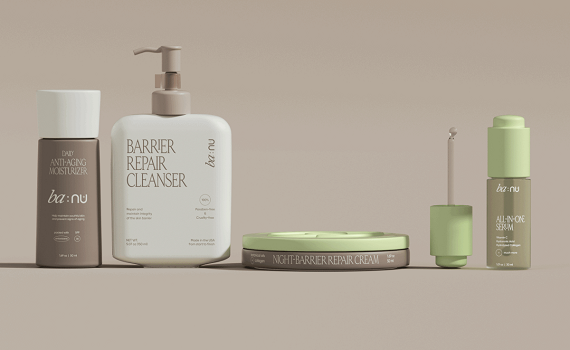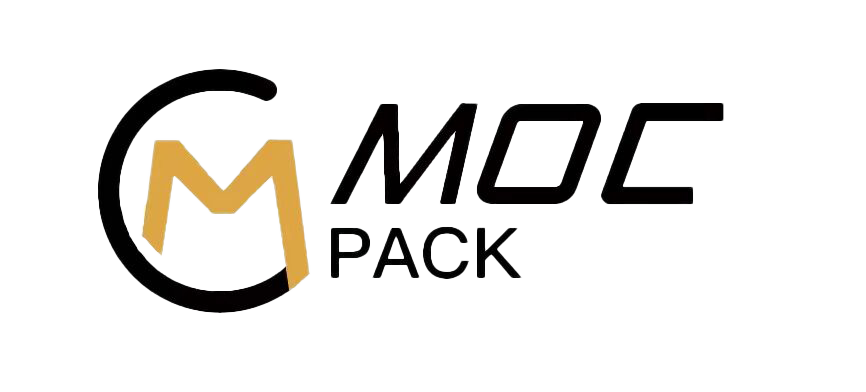Bəyəninin Əhəmiyyəti: Marketinqdə Məhsul Bəyənisinin Əsas Səbəbləri
Kosmetika sənayesində istehlakçılar mağaza rəflərində müxtəlif pomadalar, serumlar və ya üz kremi kimi məhsullarla qarşılaşdıqda, ilk növbədə diqqətləri tez-tez məhsulun özünə deyil, paketinə yönəlir – retro naxışlı pomada tubusu, buzlu şüşədən hazırlanmış serum şüşəsi və ya maqnit qapanı olan üz kremi bankası. Bu detallar istehlakçıların məhsulu götürməsinə, tərkibini yoxlamasına və nəticədə almağa qərar verməsinə səbəb ola bilən "birinci hərəkətverici qüvvə" halına gələ bilər. Kosmetik brendlər üçün paket artıq sadəcə bir "konteyner" deyil; bu, marketinqdə vacib strategiyaya çevrilmişdir. Bunun arxasında dayanan səbəblər brend imicinin ötürülməsi, istifadəçi təcrübəsinin optimallaşdırılması ilə bağlıdır və birbaşa məhsulun bazar mübarizəsində rəqabət qabiliyyətini təsir edir.
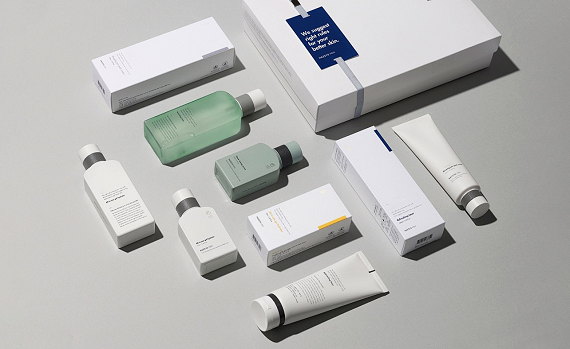
Paketləmə Brend Tanınmasında "Vizual Vizitkartıdır", İstehlakçı Təfəkkür Xərclərinin Azaldılması
Məlumatla zəngin kosmetika bazarında markalar nəzərdən keçmək üçün dərhal diqqəti cəlb etməlidirlər vizual simvollar və bu məqsədə nail olmaq üçün qablaşdırma əsas daşıyıcıdır. Markaya dair istehlakçıların yaddaşı tez-tez onun qablaşdırmasına dair təəssüratdan başlayır: Estée Lauder Advanced Night Repair haqqında danışarkən, insanlar dərhal "qəhvəyi şüşə şüşə + gümüş qapaq" klassik birləşməsini düşünürlər; Florasis haqqında düşünərkən Çin üslubu elementləri (məsələn, oyma naxışlar və yaşıl rəng tonları) olan qablaşdırma aklınıza gəlir; Kiehl'in isə sadə və aydın üslubu ilə "təbii və peşəkar" brend tonunu ötürən "ağ şüşə, göy hərflər" qablaşdırması var. Bu ikonik qablaşdırma dizaynları əsasən bir brendin dəyərlərinin, mövqeyinin və üslubunun vizual ifadəsidir.
Yeni brendlər və ya yeni məhsullar təqdim edən möhkəm brendlər üçün qablaşdırmanın "tanınması" birbaşa olaraq məhsulun rəfdə "göz qabağına çıxıb çıxmadığını" müəyyən edir. Məsələn, yerli bir kosmetika brendi ənənəvi döndürülərək açılmaqla fərqlənən dodaq parıltısı ilə müqayisədə "kapsul formalı şüşə + sıxılaraq çıxan dizayn"lı yeni bir dodaq parıltısı təqdim etdi - bu unikal qablaşdırma yalnız istifadəni asanlaşdırmır, həm də istehlakçıların qısa video platformalarında paylaşım zamanı "vizual yaddaş nöqtəsi" yaratmasına imkan verir. Sadəcə 3 ay ərzində brend yalnız qablaşdırma ilə bağlı istifadəçi tərəfindən yaradılan kontent vasitəsilə 5 milyondan çox baxış əldə etdi. Aydındır ki, yaxşı qablaşdırma brendin əhəmiyyətli reklam xərcləri etmədən istehlakçıların "vizual восприятие" vasitəsilə ilk tanınma ötürülməsini tamamlamasına imkan verir və brendin bazarı təhsil etmə xərclərini əhmiyyətli dərəcədə azaldır.
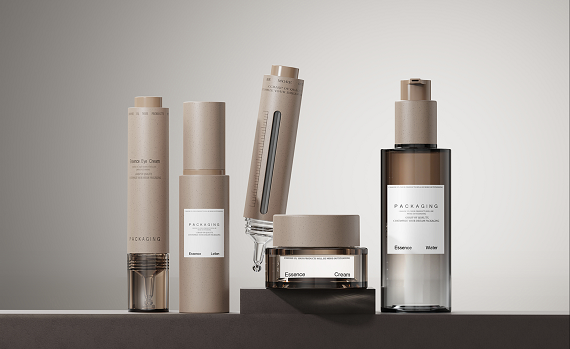
Qablaşdırma məhsulun qorunması üçün "Təhlükəsizlik Bariyeri"dir və brend nüfuzunu və istehlakçı etimadını qoruyur
Kosmetik məhsulların tərkibindəki komponentlər (belə ki, aktiv peptidlər, C vitamini və əsas yağlar) saxlama şəraiti üçün yüksək tələblər irəli sürür. Yüksək temperatur, işıq, oksidləşmə və ya çirklənmə tərkib hissələrinin xarab olmasına, məhsulun effektivliyinin azalmasına və hətta təhlükəsizlik problemlərinə səbəb ola bilər. Məhsullar üçün "birinci müdafiə xətti" kimi çıxış edən qablaşdırmanın qoruyucu funksiyası birbaşa brend nüfuzuna bağlıdır — əgər istehlakçının aldığı üz kremi zəif qablaşdırma sıxlığı səbəbiylə xarab olarsa və ya serum şişə materialının uyğunsuzluğundan dolayı çökme halına düşərsə, bu yalnız istehlakçının məhsula etimadını itirməsinə deyil, həm də şikayətlərə, geri qaytarma hallarına və hətta brend nüfuzunda böhran yaranmasına səbəb ola bilər.
Marketinq baxımından "etibarlı qablaşdırma" özü brendin "gizli satış nöqtəsi"dir. Məsələn, sərhəd aşan satılan serum məhsulları üçün peşakar qablaşdırma uzaq məsafəli daşınma zamanı təzyiq dəyişiklikləri və zərbələr nəticəsində meydana gələn sızmanı qarşısını almaq üçün (daxili örtük film + xarici vida qapağı) ilə birləşdirilmiş sıxılmaz PET şüşə bədənindən istifadə edir. İşıqdan uzaq saxlanılması tələb olunan retinol üz kremi üçün isə qablaşdırma işıq keçirməyən tünd rəngli HDPE materialından istifadə edilir və "vakuum nasosu" ilə təchiz olunur ki, bu da komponentlərin oksidləşməsini qarşısını alır və eyni zamanda barmaqla toxunmaqla çirklənməsinin qarşısını alır. Bu görünən "gizli" qablaşdırma dizaynları "məhsul keyfiyyəti" üzrə brendin məsuliyyətini əks etdirir. İstehlakçılar "açıldıqdan sonra məhsulun sabit qaldığını" hiss etdikdə, brendə olan etimadları daha da möhkəmlənir və hətta təkrar alış-verişlərə və tövsiyyələrə çevrilə bilərlər.
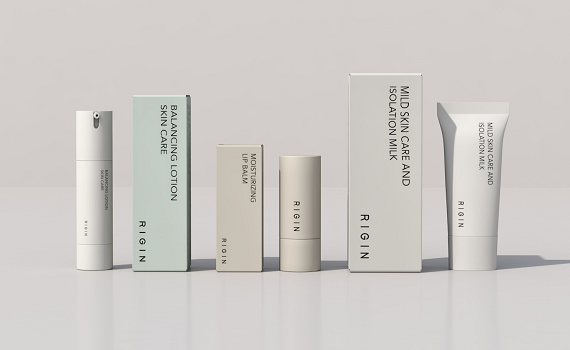
Bərkitmə İstifadəçi Təcrübəsinin "Uzadılmış Daşıyıcısıdır", Məhsul Dəyərini və Emosional Bağlantını Artırır
Kosmetik məhsulların istifadəsi tez-tez "ritual hissi" ilə müşayiət olunur—sabahları diqqətlə hazırlanmış tonikin açılması, gecələr rahat toxunuşlu təmizləyici balzam borusu istifadə etmək, bu cür detallar istehlakçının xasiyyətini təsir edir. İstifadəçilərlə birbaşa təmasda olan "vasitə" kimi bərkitmənin dizaynı — istifadə qaydalarına uyğun olub-olmaması və ya emosional dəyər ötürə bilib-bilməməsi — birbaşa istifadəçi təcrübəsinin keyfiyyətini müəyyən edir və nəticədə marketinq nəticələrinə təsir göstərir.
Praktik baxımdan, paketləşdirmə dizaynı istehlakçıların istifadə ssenarilərinə uyğun olmalıdır: məsələn, "biznes səfərlərində olanlar" üçün kiçik həcmli dəri baxımı məhsullarında sızmanı qarşısını almaq və daşınmasını asanlaşdırmaq üçün "sıxma boruları + vida qapaqları" istifadə olunur; "tənbəllər" üçün isə maska paketləşdirməsi "asandlıqla açılan kənarlar + içərisində maye yönəldici kanallar" ilə hazırlanır ki, bu da istehlakçıların maskanı əmək çəkmədən çıxara bilməsini və paketdəki mayenin tam şəkildə istifadə edilməsini təmin edir. Bu cür "istifadəçi dostu dizaynlar" kiçik görünsə də, istehlakçıya brendin "diqqətliliyini" hiss etdirir və nəticədə məhsula meylliliyi artırır.
Emosional baxımdan, paketləmə "emosional əlaqə üçün keçid" də ola bilər. Məsələn, bayram məhdudluğunda olan kosmetik paketləmə — Milad üçün "buz kristalları naxışlı pomada boruları" və Sevgililər Günü üçün "ürək formalı hədiyyə qutulu rumlar" — bu paketlər yalnız istehlakçıların "hədiyyə vermə ehtiyacını" ödəmir, həm də "bayram atmosferi" vasitəsilə brendin "isti tərəfini" ötürür. Bir çox istehlakçı məhsulları "paketləməsinə görə bəyəndiyi" üçün alır və məhsuldan istifadədən sonra belə paketləməni saxlayaraq saxlama qutusu ya da dekorativ element kimi saxlayırlar. Bu "emosional saxlanma", brendin istehlakçıların zehnində daha dərin iz buraxmasına imkan verir və marketinqdə "şifahi yayımın" əhəmiyyətli hərəkət qüvvəsinə çevrilir.
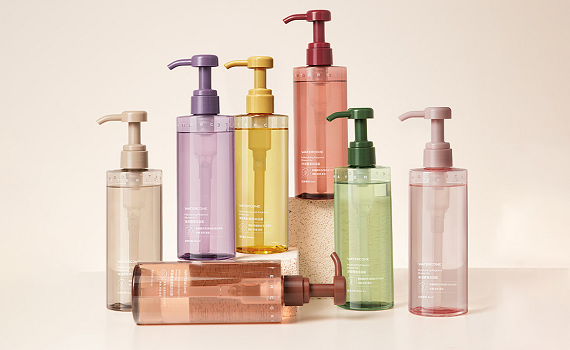
Paketləmə fərqlənmiş rəqabət üçün "Əsas Silahdır" və homogen bazar şəraitində məhsulların seçilərək fərq yaratmasına kömək edir
Hazırda kosmetika bazarı çox homojendireyn tərkib hissələri (hiyaluron turşusu, niacinamid kimi) və oxşar təsirləri (məsələn, nəmləndiricilər, ağartıcılar) ilə istehlakçıların sürətli seçim etməsini çətinləşdirir. Bu zaman, qablaşdırma markalar üçün "fərqli rəqabət" əldə etmək üçün əsas bir irəliləyiş olur. Unikal dizayn və materiallar vasitəsilə məhsullar rəqiblərin arasında fərqlənə bilər.
Məsələn, "təbii və orqanik" məhsullara diqqət yetirən bir dəri baxımı brendi paketləmədə "təkrar emal oluna bilən şüşə qutular + etiketsiz çap" (lazer gravürasiya ilə yalnız brend məlumatı təqdim edilir) istifadə edir. Bu yanaşma "mühit-mühafizə və davamlılıq" haqqında brend konsepsiyasını təbliğ etməklə yanaşı, plastik paketlər işlədən digər brendlərlə kəskin ziddiyyət təşkil edərək "yaşıl istehlak"a maraq göstərən böyük sayda müştəri cəlb edir. Başqa bir kosmetika brendi rəssamlarla əməkdaşlıq edərək "əl ilə rəsm çəkilmiş ten sərhəd paleti paketləməsi"ni təqdim etdi; hər bir paletin üzərindəki illüstrasiya özünəməxsus hekayə danışır. Bu "ədəbi-rəssam paketləmə" məhsula "kolleksioner dəyər" verən qədər deyil, həm də sosial mediada "paylaşma bayramı" başlattı və nəticədə məhsulun yayılması rəqiblərinin xeyli qabağına keçdi.
Kosmetik markalar üçün fərqlənən qablaşdırma yalnız hədəf müştəriləri cəlb etməklə kifayətlənmir, məhsulun "premium sahəsini" də dəstəkləyə bilər — eyni pomada üçün "metal oyma borulu" məhsulun qiyməti adi plastik borulu məhsuldan 30% yüksək ola bilər. İstehlakçılar xüsusi qablaşdırma üçün əlavə ödəniş etməyə hazırdırlar, çünki qablaşdırma məhsula istifadə dəyərindən kənar "əlavə dəyər" verir (məsələn, status simvolu, estetik təminat). Bu fərqlənmə üstünlüyü marketinqdə brendlərin tez bir zamanda nişə bazarları ələ keçirməsinə və unikal rəqabət maneəsi yaratmasına kömək edə bilər.
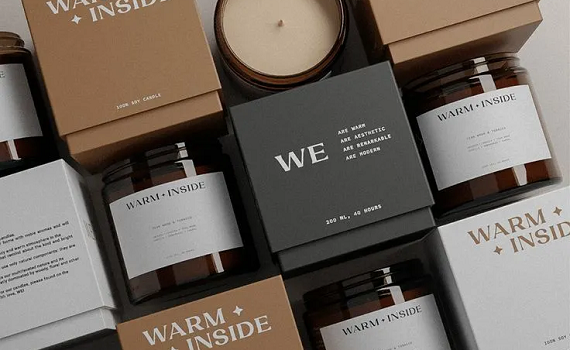
Qablaşdırma Marka Konsepsiyasını Təbliğ Etmək Üçün "Pəncərədir", Cari İstehlak Trendləri ilə Uyğundur
İstehlakçıların ekolojiyə və sağlamlığa olan diqqətinin artması ilə "davamlı qablaşdırma" və "təhlükəsiz qablaşdırma" kosmetika bazarında vacib meyllər halına gəlib və qablaşdırma bu anlayışları çatdırmaq üçün brendlər üçün "pəncərə" rolunu oynayır. Məsələn, getdikcə daha çox brend "təkrar emal olunan şüşə materiallarından", "bioloji parçalanabilən plastiklərdən" və "yenidən doldurulan qablaşdırmalardan" istifadə edir. Bu cür qablaşdırma dizaynları yalnız cari "yaşıl istehlak" trendinə uyğun deyil, həm də istehlakçıların brendin "ictimai məsuliyyətini" hiss etməsinə imkan verir və nəticədə brendin populyarlığını artırır.
Məsələn, beynəlxalq bir dəri baxımı brendi "doldurulabilən serumlar" təqdim etdi — istehlakçılar bir dəfə tam ölçüdə məhsulu aldıqdan sonra, növbəti dəfə yalnız "serumun iç pakketi"ni alıb orijinal şüşəyə yerləşdirərək istifadəni davam etdirə bilərlər. Bu qablaşdırma həlli yalnız plastik tullantıların azalmasına kömək etmir, həm də istehlakçının təkrar alış-veriş xərclərini aşağı salır. Brendin qablaşdırma vasitəsilə "davamlılıq" konsepsiyasını təbliğ etməsindən sonra, bu yalnız ekoloji fəalların diqqətini cəlb etməyə kömək etmədi, həm də mediada geniş ictimaiyyət qazandı və bununla da brendin təsirini daha da artıraraq yayılmasına səbəb oldu.
Həmçinin, "həssas dəriyə sahib istehlakçılar" üçün nəzərdə tutulan kosmetik məhsullarda qablaşdırmada "fluoresan agent olmadan çap" və "qida səviyyəli materiallar" kimi işarələmələr aydın şəkildə göstərilir. Bu cür detalların qablaşdırma vasitəsilə istehlakçılara çatdırılması, "təhlükəsiz və etibarlı" brend imicinin sürətlə yaradılmasına, hədəf auditoriyanın dəqiq müəyyənləşdirilməsinə və marketinqin dəqiqliyinin artırılmasına kömək edir.
Bəzəyici vasitələrin marketinqində paketləşdirmə "strateji aktiv"dir
Yekun olaraq, kosmetika bəndirolunun marketinqdəki əhəmiyyəti artıq "məhsulları qorumaq və daşınmasını asanlaşdırmaq" kimi əsas funksiyalardan xeyli irəli getmişdir. Bu, indi brendin tanınması üçün "vizual vizitkart", istifadəçi təcrübəsinin "genişlənmiş daşıyıcısı", fərqlənməli rəqabətin "əsas silahı" və brend konsepsiyalarının ötürülməsi üçün "pəncərə" rolunu oynayır. Kosmetika brendləri üçün bəndolunun dəyərinə diqqət bəsləməmək, istehlakçılarla əlaqə qurmaq və bazarда seçilərək fərqlənmək imkanlarından imtina etməklə eynidir.
Kosmetik qablaşdırma sahəsində ixtisaslaşmış peşəkar xarici ticarət şirkəti kimi, biz brend marketinqi üçün qablaşdırmanın əhəmiyyətini dərin başa düşürük — "estetik və funksional şüşə dizaynından", "ekoloji cəhətdən təhlükəsiz materialların seçilməsinə" qədər və "istifadə senarilərinə uyğun detalların optimallaşdırılmasına" qədər hər addımda brendlərə fərdi qablaşdırma həlləri təqdim etməyə sadiqik. Əgər kosmetik brendinizin marketinq strategiyasını dəstəkləyə biləcək qablaşdırmaya ehtiyacınız varsa, məhsullarınızın bazarда peşəkar xidmətlərimizlə seçilən mövqe tutmasına kömək etməyə hazırqımyz.
